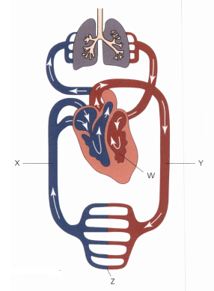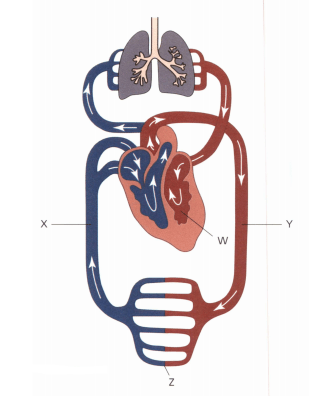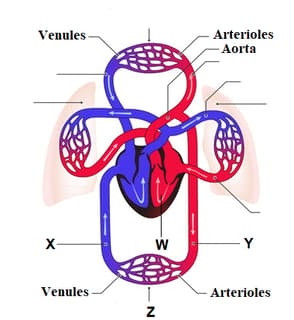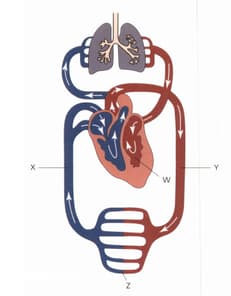Human Circulatory System
Important Questions on Human Circulatory System

The diagram shows two blood vessels.
Explain why vessel A has thick elastic walls.

The diagram shows two blood vessels.
Name each of the vessels shown in the diagram.
The diagram shows the ribcage.

Name an organ protected by the ribcage that pumps blood.
Draw one line to match the part of the blood with its function.

Explain why Amina's pulse rate increase after exercise. Write your prediction.
Write a prediction about how you think Amina's pulse rate will be affected by exercise.
Describe how Amina could test how her pulse is affected by exercise.
Amina takes her pulse. She counts 19 beats in 15 seconds. Calculate her pulse rate in beats per minute (bpm).
Explain why the circulatory system is described as a double circulatory system.

In the diagram, the wall of chamber W is thicker than the chamber on the other side of the heart. Explain why this is.

The diagram shows part of the circulatory system. Write down the letter of the vessel that carries blood that is lower in oxygen.

The diagram shows part of the circulatory system. Write down the letter of the vessel that has thick and strong walls.

The diagram shows part of the circulatory system. Write down the letter of the vessel that carries blood that is higher in oxygen.
Explain what happens if muscle tissue in the heart does not get enough blood.
Describe how eating too many fatty foods can affect the arteries.
Complete the table to show the names and functions of the types of blood vessels.
| Name of vessel | Function |
| Arteries | |
| Veins | |
| Supply cells with substances they need from the blood. |
Describe the main function of the heart.
Which of the following organs are part of the circulatory system?

